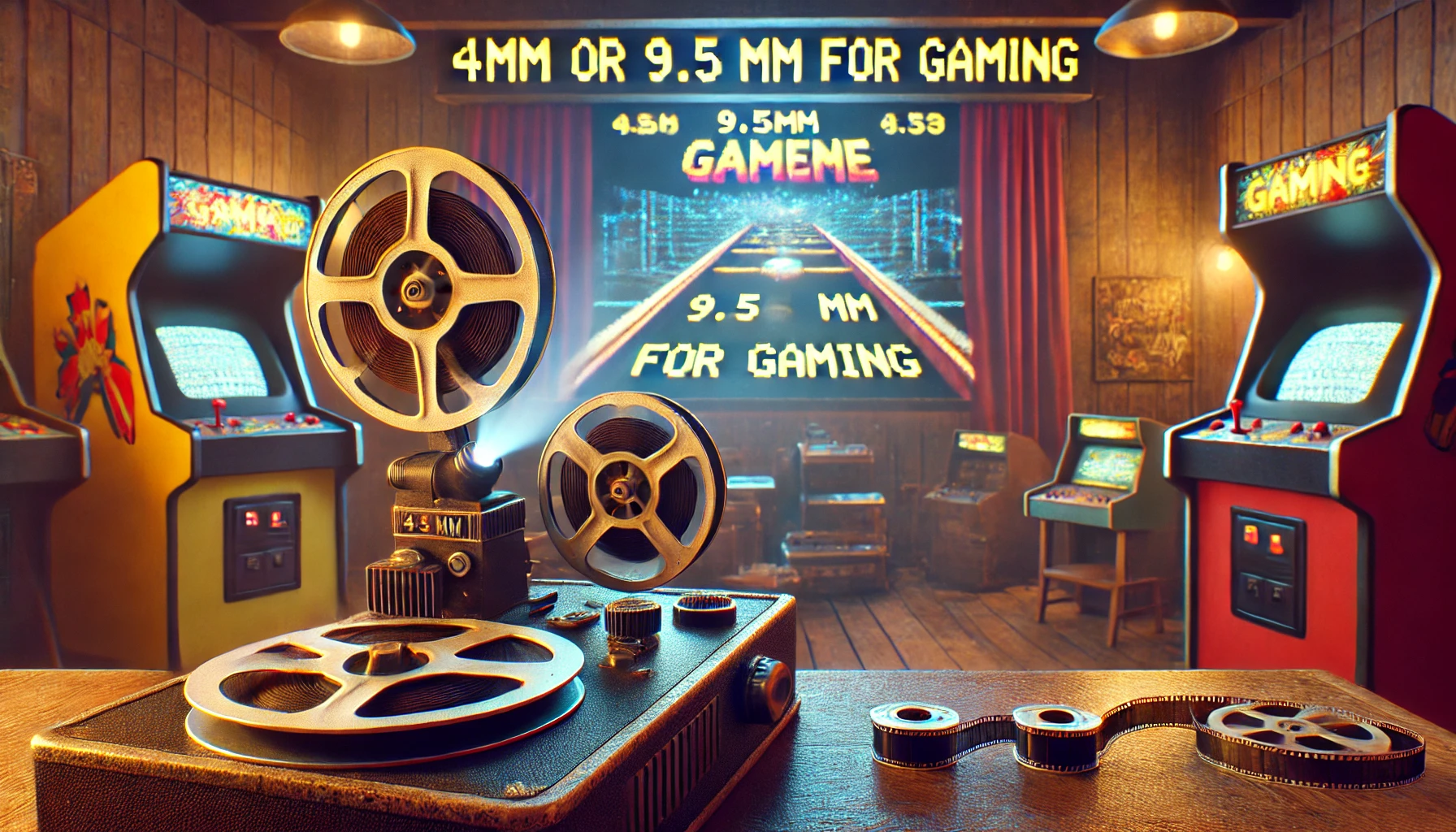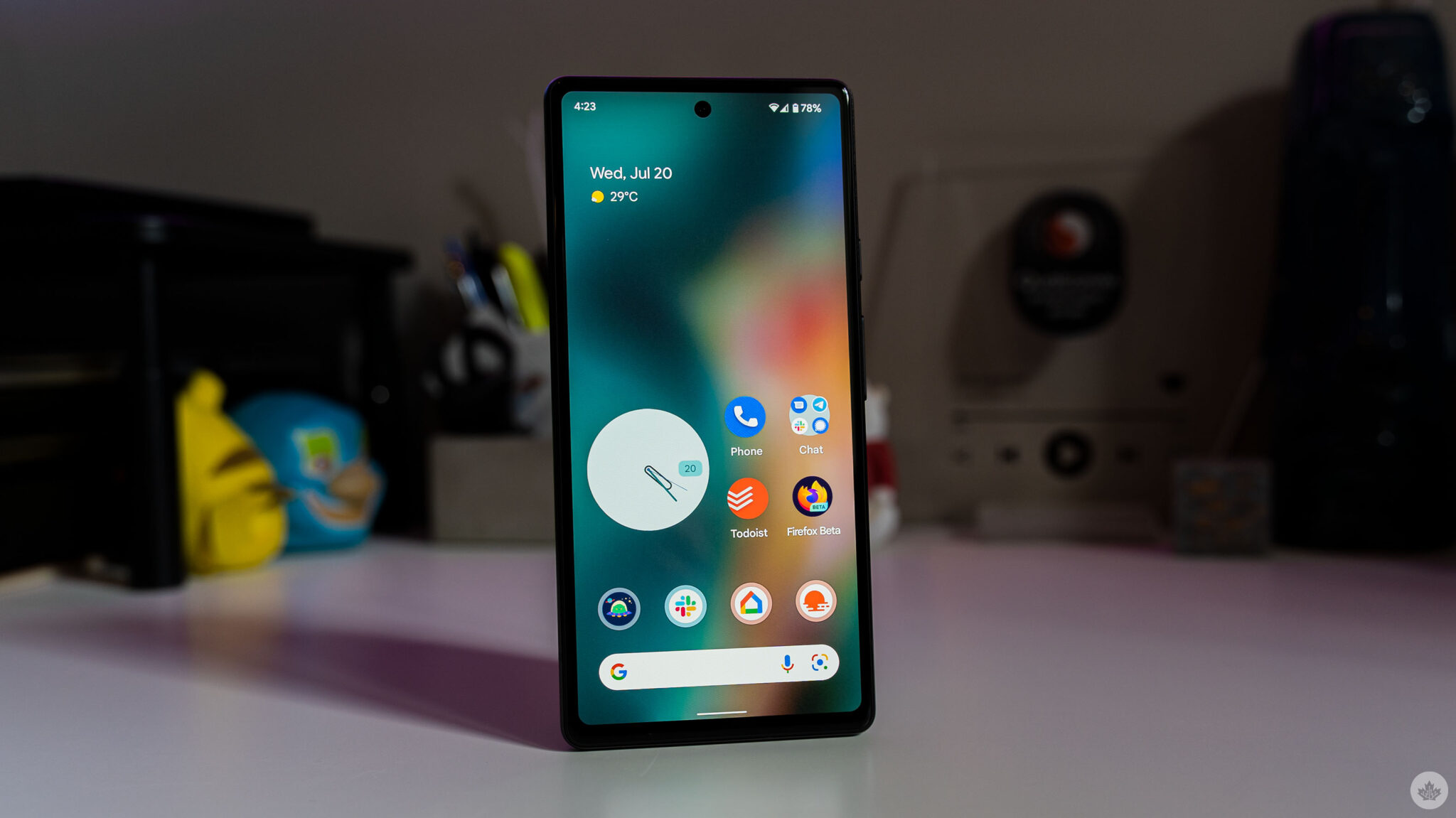GAMING
4mm or 9.5 mm for Gaming: From Film Projection to Digital Games

Film has played an important role in the evolution of entertainment, including gaming. Before digital technology, film reels were one of the main ways to display moving images.
The 4mm or 9.5 mm for gaming refers to two different film formats that had an impact on early visual experiences. While 9.5mm was more commonly used in home movie projection, 4mm is less known but may have been utilized in niche applications.
Both film sizes were part of early cinematic experiences that influenced arcade machines and mechanical gaming devices. The concept of moving images on a screen laid the foundation for video games as we know them today.
These formats might not have been directly used in mainstream gaming, but they played a role in shaping visual storytelling and mechanical entertainment devices. Their influence can still be seen in retro-styled games and modern film-based storytelling techniques in gaming.
Understanding Film Formats
The 4mm film format is relatively rare and not widely documented in entertainment history. It may have been used in experimental or microfilm applications, potentially in early visual projection for niche gaming experiences.
The 9.5mm film format, introduced by Pathé in the 1920s, was widely used for home movies, particularly in Europe. It provided a cost-effective way for people to watch and create films. This format had a distinct perforation system in the middle of the film strip, allowing more image space.
Because of its affordability, 9.5mm film was used in amateur filmmaking, educational reels, and visual storytelling. This influenced early interactive entertainment, where projected images were part of mechanical gaming setups.
Although modern gaming does not use physical film reels, early formats like 9.5mm contributed to the evolution of visual entertainment by introducing motion-based storytelling, which later inspired video game cutscenes and animations.
Film Projection and Gaming Crossovers
Before electronic video games, mechanical gaming machines relied on film projection to create interactive experiences. Some arcade-style machines used short film loops to display animated sequences as part of their gameplay.
The 4mm or 9.5 mm for gaming might have been used in early experimental setups where projected moving images were combined with physical controls. These gaming experiences functioned similarly to filmstrip viewers, where players controlled aspects of the projected images.
One example of this crossover was early coin-operated peep-show machines, where viewers could watch short films. Some of these machines added interactive elements, making them a precursor to arcade gaming.
The idea of using pre-recorded visuals for gaming evolved into the concept of full-motion video (FMV) games in later decades. While modern games are digital, the influence of film-based gaming experiences remains evident.
Influence on Arcade and Home Entertainment
Arcade gaming in the early 20th century experimented with various visual display methods. Some mechanical arcade cabinets used film-based projection systems to create simple animated effects.
A few early gaming devices used 9.5mm film reels to project sequences that changed based on user input. Although this was not true video gaming, it introduced the concept of player-controlled visual experiences.
Home entertainment also benefited from film-based projection. Many households in the 1930s-1950s used 9.5mm film projectors to watch movies. This experience of viewing films at home set the stage for the later rise of home gaming consoles.
Table: Comparison of Film-Based Gaming Elements
| Feature | 9.5mm Film Gaming | Mechanical Arcade Machines | Early Digital Gaming |
| Visual Format | Projected film | Physical moving parts | Pixel-based screens |
| Interactivity | Limited choices | Mechanical levers/buttons | Controller-based |
| Availability | Rare, experimental | More common in arcades | Widespread |
| Influence | Inspired storytelling | Led to arcade games | Became standard |
These early experiences helped shape the transition from physical film to electronic screens, ultimately influencing how we interact with video games today.
Evolution and Modern Influence
As technology advanced, film-based visuals were gradually replaced by digital screens and pixel-based graphics. However, the impact of 4mm or 9.5 mm for gaming can still be seen in certain retro-styled games that mimic the grainy appearance of old film reels.
Modern game developers sometimes use film grain effects to create a nostalgic or cinematic experience. The use of FMV (full-motion video) sequences in games is also a continuation of the film-based storytelling approach that began with early projection systems.
Some collectors and gaming historians still explore film-based gaming devices, preserving their history and showcasing them in museums or exhibitions. These efforts help keep the legacy of early gaming technology alive.
Even though 4mm and 9.5mm film formats are no longer used in mainstream gaming, they played a crucial role in the evolution of visual storytelling. Their influence continues in the way games use cinematic techniques and historical references.
Conclusion
The history of gaming is deeply connected to advancements in film technology. The use of 4mm or 9.5 mm for gaming may have been limited, but these formats contributed to the evolution of mechanical gaming, arcade machines, and visual storytelling.
Early film projection techniques helped pave the way for interactive entertainment, leading to the development of video games. The concept of using motion-based visuals in gaming started with film reels and later evolved into electronic screens.
While modern gaming no longer relies on film-based technology, the principles of visual storytelling and animation techniques from early formats still influence game design today.
The legacy of these film formats remains alive in retro gaming aesthetics, FMV storytelling, and gaming history preservation. Their role in shaping entertainment is a reminder of how older technologies continue to inspire new innovations.
FAQs
Were 4mm or 9.5 mm film formats directly used in gaming?
No, but 9.5mm film was used in early visual entertainment, influencing mechanical arcade machines and gaming storytelling.
How did 9.5mm film contribute to gaming history?
It introduced motion-based storytelling and projection techniques, which later inspired arcade games and cinematic cutscenes.
Is there any modern gaming technology inspired by these film formats?
Yes, modern games use film grain effects, FMV storytelling, and vintage aesthetics influenced by early film projection.
Why is 4mm film rarely mentioned in gaming discussions?
4mm is a niche format, likely used for microfilm applications, with little documented connection to gaming history.
Can old 9.5mm film-based gaming devices still be found today?
Yes, some collectors and museums preserve early film-based gaming devices as part of gaming history exhibitions.
GAMING
PlugboxLinux Gaming: A Secure, Fast, and Customizable Gaming OS

PlugboxLinux Gaming is an optimized Linux distribution built specifically for gamers. It focuses on delivering high performance, stability, and customization options for a smooth gaming experience.
Unlike traditional Linux distributions, PlugboxLinux Gaming is designed to reduce unnecessary background processes. This allows games to utilize maximum system resources, resulting in better frame rates and lower latency.
For gamers who prefer full control over their system, PlugboxLinux Gaming offers extensive customization options. Users can modify the interface, tweak performance settings, and install only the essential components needed for gaming.
This distribution is a great choice for those looking to escape the limitations of Windows and explore an open-source, lightweight gaming environment. It supports various gaming platforms and tools that make it easy to run games without compatibility issues.
PlugboxLinux Gaming – A Unique and Powerful Gaming OS
PlugboxLinux Gaming is a specialized Linux distribution built for gamers who want high performance, stability, and customization. Unlike traditional operating systems, it removes unnecessary background processes, ensuring that most system resources are dedicated to gaming. This leads to smoother gameplay, faster load times, and better frame rates, even on lower-end hardware.
Another key advantage of PlugboxLinux Gaming is its flexibility. It supports both Linux-native and Windows games using tools like Proton and Wine, making it easy for gamers to access a wide range of titles. With built-in driver support for NVIDIA, AMD, and Intel GPUs, along with frequent updates, it provides a reliable and future-proof gaming experience.
What is PlugboxLinux Gaming?
PlugboxLinux Gaming is a lightweight, performance-focused Linux distribution tailored for gaming enthusiasts. It aims to provide a smooth gaming experience by optimizing system resources and eliminating unnecessary processes.
This OS is based on Arch Linux, meaning it follows a rolling-release model. Users always get the latest updates, ensuring compatibility with new games and hardware improvements.
One of the key aspects of PlugboxLinux Gaming is its modularity. Users can install only what they need, keeping the system clean and efficient. Unlike bloated operating systems, this approach minimizes system load and maximizes performance.
It is designed to support both native Linux games and Windows games using tools like Proton and Wine. This makes it a flexible option for players looking to enjoy a wide variety of games on a secure and customizable platform.
Key Features of PlugboxLinux Gaming
The core feature of PlugboxLinux Gaming is its minimalistic design, which ensures that most system resources are dedicated to gaming. This significantly improves performance compared to traditional operating systems.
It also provides pre-configured gaming environments, allowing users to install and start playing games with minimal setup. Gamers don’t have to worry about extensive configurations, as most settings are optimized by default.
Security is another major benefit. Unlike Windows, PlugboxLinux Gaming has fewer vulnerabilities and is less likely to be affected by malware. This creates a safe gaming environment where players don’t have to worry about security threats.
A key highlight is its rolling release model, meaning users always have access to the latest game updates, drivers, and system improvements. This ensures long-term stability and compatibility with modern gaming hardware.
Game Compatibility and Support
PlugboxLinux Gaming supports a wide range of games, including both Linux-native titles and Windows-based games through compatibility layers. This makes it a versatile option for all types of gamers.
Many modern games are available directly on Steam, which has over 25,000+ Linux-supported games. With Steam Play (Proton), Windows games can also be played seamlessly on PlugboxLinux Gaming.
Other platforms like GOG and Epic Games are increasingly supporting Linux. While not all games are natively compatible, tools like Lutris and Heroic Launcher help manage and optimize game installations.
For retro gaming fans, PlugboxLinux Gaming supports emulators for PlayStation, Xbox, Nintendo, and more, allowing players to enjoy classic games with enhanced performance.
| Game Platform | Support on PlugboxLinux Gaming |
| Steam | Fully Supported |
| GOG | Partially Supported |
| Epic Games | Expanding Support |
| Emulators | Strong Compatibility |
Performance and Hardware Support
PlugboxLinux Gaming is optimized to deliver high performance on both new and older hardware. It uses lightweight system processes to ensure smooth gameplay even on lower-end PCs.
The OS includes built-in driver support for major graphics cards, including NVIDIA, AMD, and Intel GPUs. This ensures that users get the best possible performance without additional setup.
It also provides tweaked CPU and RAM management, preventing background applications from interfering with gaming performance. This results in higher frame rates and reduced input lag.
For those with high-refresh-rate monitors, PlugboxLinux Gaming includes display settings optimized for 120Hz, 144Hz, and even 240Hz gaming. This makes gameplay smoother and more responsive.
Installation and Setup Guide
Setting up PlugboxLinux Gaming is simple and requires minimal technical knowledge. Users can download the official ISO file from the website and create a bootable USB for installation.
The installation process is straightforward, guiding users through system setup and hardware detection. Most essential gaming tools come pre-installed, making it easy to get started.
Once installed, users should update drivers and system packages to ensure maximum compatibility with modern games. The OS provides built-in support for automatic updates.
To enhance performance, players can adjust graphics settings, enable gaming mode, and install additional tools like Lutris and Wine for better game compatibility.
Customization and Tweaks for Better Gaming
One of the biggest advantages of PlugboxLinux Gaming is its high level of customization. Users can modify system themes, icons, and even optimize the desktop environment for a personalized look.
Performance tweaks allow users to enable real-time kernel optimizations, adjust CPU performance settings, and allocate system resources more efficiently for gaming.
For users who stream or record gameplay, PlugboxLinux Gaming supports software like OBS Studio and integrates well with streaming platforms.
Players can also install third-party gaming overlays, FPS counters, and monitoring tools to track performance and optimize settings for different games.
Community and Support
PlugboxLinux Gaming has an active and growing community of users and developers. This ensures that issues are quickly addressed and new features are regularly introduced.
The official forums and Discord groups provide valuable resources for troubleshooting, performance tweaks, and game compatibility discussions.
New users can find extensive documentation and video tutorials to help them get started with installation, customization, and performance tuning.
Regular updates and patches keep the system stable and ensure compatibility with the latest games, hardware, and software advancements.
Pros and Cons of PlugboxLinux Gaming
Pros:
- Lightweight OS with minimal system resource usage
- High compatibility with Steam, Proton, and Wine for Windows games
- Rolling release model ensures frequent updates and improvements
- Secure and stable with fewer vulnerabilities than Windows
- Fully customizable interface and performance settings
- Optimized for high FPS and low latency gaming
- Supports a wide range of hardware, including older PCs
Cons:
- Requires some Linux knowledge for setup and troubleshooting
- Not all Windows games run perfectly without tweaks
- Limited official support; mostly relies on community forums
- Some third-party launchers (e.g., Epic Games) require workarounds
- Certain proprietary software and drivers may have compatibility issues
Conclusion
PlugboxLinux Gaming is an excellent alternative for gamers looking for a lightweight, customizable, and high-performance operating system. It eliminates many of the resource-heavy drawbacks of traditional OS options.
With strong compatibility for Steam, Proton, Wine, and emulators, it offers access to a massive library of games. Performance optimizations ensure smooth gameplay on both modern and older hardware.
The active community and continuous updates make it a reliable choice for long-term gaming. While it requires some learning for beginners, the benefits of a more stable and secure gaming environment are worth the effort.
For those seeking a Windows-free gaming experience with maximum control and flexibility, PlugboxLinux Gaming is a top choice.
FAQs
Is PlugboxLinux Gaming good for beginners?
Yes, but it has a learning curve; beginners may need time to adjust, but guides and community support help simplify the process.
Can I play Windows games on PlugboxLinux Gaming?
Yes, it supports Windows games using Proton, Wine, and Lutris, allowing many popular titles to run smoothly.
Does PlugboxLinux Gaming support all gaming platforms?
It fully supports Steam and emulators, with partial support for GOG and Epic Games using third-party tools.
Will my old PC run games better with PlugboxLinux Gaming?
Yes, its lightweight design optimizes performance, making it ideal for older hardware with limited resources.
How often does PlugboxLinux Gaming receive updates?
It follows a rolling release model, ensuring continuous updates for game compatibility, security, and performance improvements.
GAMING
Cookie Clicker Unblocked: Play Anywhere Without Restrictions!

Cookie Clicker is a famous incremental game where players bake cookies by clicking on a giant cookie. Over time, they can buy upgrades and automate production. This makes the game both fun and addictive.
However, many schools and workplaces block gaming websites. This prevents students and employees from accessing games like Cookie Clicker. To bypass this, many look for Cookie Clicker Unblocked, a version that works on restricted networks.
Unblocked games are hosted on alternative websites that avoid filters set by institutions. These versions allow users to play without restrictions. However, players should be cautious about which websites they use.
The demand for Cookie Clicker Unblocked is high because the game is simple, engaging, and endless. Since it runs in a browser, it does not require downloading or installing software.
What is Cookie Clicker?
Cookie Clicker was created by Orteil in 2013 as a browser-based incremental game. Its straightforward but engrossing gameplay immediately made it popular. Players start by clicking a cookie, earning more cookies to buy upgrades.
The game follows an idle-clicker format, meaning players do not need to be active all the time. After purchasing automatic upgrades, cookies are generated even when the player is not clicking.
Some key features of the game include:
- Upgrades: Buy grandmas, farms, and factories to produce cookies.
- Golden Cookies: These appear randomly and give huge bonuses.
- Achievements: Unlock different milestones by reaching cookie production goals.
Cookie Clicker’s popularity is due to its never-ending gameplay. Players always have something new to unlock, making the game continuously engaging.
Understanding Unblocked Versions
Many schools and workplaces block gaming sites to ensure students and employees focus on their tasks. However, players still look for ways to access games like Cookie Clicker Unblocked.
Unblocked versions are hosted on different domains, bypassing restrictions. These versions offer the same gameplay without requiring software downloads.
Some ways players access Cookie Clicker Unblocked:
- Using mirror sites or game-hosting platforms.
- Searching for browser-based HTML5 versions that work on school networks.
- Playing through VPN services (not always recommended).
However, it is important to be cautious. Some unblocked versions may contain ads, pop-ups, or malware. Always use trusted sites to play safely.
How to Play Cookie Clicker Unblocked
Playing Cookie Clicker Unblocked is straightforward. It follows the same mechanics as the official version but can be accessed on restricted networks.
Basic Steps to Play
- Click the Cookie – Start by clicking the big cookie to generate cookies.
- Buy Upgrades – Use cookies to buy cursors, grandmas, and buildings that increase production.
- Unlock Bonuses – Keep an eye out for golden cookies and special upgrades.
- Expand Your Empire – Continue upgrading and automating to maximize production.
Common Features of Unblocked Versions
- Same core gameplay as the original.
- No need to install software – runs on browsers.
- Works in school or office networks that block regular gaming sites.
Below is a comparison table of the official and unblocked versions:
| Feature | Official Cookie Clicker | Cookie Clicker Unblocked |
| Accessibility | Regular gaming sites | Works on restricted networks |
| Requires Download? | No | No |
| Includes All Features? | Yes | Yes, but varies by site |
| Safe to Play? | Yes | Depends on the website |
Playing Cookie Clicker Unblocked is a great way to pass time without limitations. However, always use safe and trusted sources.
Features of Cookie Clicker Unblocked
Despite being an unblocked version, it offers the same core features as the original game. Players can still enjoy endless cookie production and automation.
Key Features
- Fully playable in browsers – no download needed.
- Upgrades and Achievements – Progress as you bake more cookies.
- Golden Cookies & Special Events – Random bonuses appear to boost production.
- Auto-Clicking Features – Players can automate cookie production with upgrades.
Some unblocked versions even include mods and hacks. This allows players to speed up their progress. However, using mods may affect the experience of the game.
The best part about Cookie Clicker Unblocked is that players can still experience the fun of endless cookie production anywhere.
Is It Safe to Play?
Not all unblocked game sites are safe. Some may contain ads, malware, or harmful pop-ups. Players should only use trusted sources to play safely.
How to Identify Safe Websites
- Check the URL – Avoid suspicious links with too many ads.
- Use Trusted Gaming Platforms – Sites like GitHub sometimes host safe versions.
- Read Reviews – Other players often report unsafe sites.
Playing responsibly is also important. Schools and workplaces block games for a reason, so make sure to play only in appropriate situations.
Why People Love Cookie Clicker Unblocked
Many people love Cookie Clicker Unblocked because it is simple, fun, and requires no commitment. Players can enjoy the game without worrying about progress loss.
Some reasons for its popularity:
- Relaxing yet addictive gameplay – No need to think too much.
- No time limits – Play whenever and for as long as you want.
- Passive progression – The game continues running even when not active.
Since it’s an idle-clicker game, players can leave it running in the background while doing other tasks. This makes it great for casual gaming.
Alternatives to Cookie Clicker Unblocked
If players enjoy idle-clicker games, they may also like other incremental games. Many of these games follow similar mechanics, with constant upgrades and automation.
Other Popular Idle Games
- Clicker Heroes – A fantasy-based clicker game.
- Adventure Capitalist – Focuses on building a business empire.
- Idle Miner Tycoon – Simulates mining and resource collection.
These games offer similar experiences and can be played both officially and through unblocked versions.
Conclusion
Cookie Clicker Unblocked is a great way to enjoy the game without restrictions. It allows players to experience the full gameplay even if gaming sites are blocked.
However, players should always be careful when choosing where to play. Some unblocked versions may contain ads, malware, or modified content.
For the best experience, it is recommended to play on trusted sites. This ensures safe and enjoyable cookie production.
Ultimately, Cookie Clicker Unblocked provides endless fun for players who want to bake millions of cookies anytime, anywhere.
FAQs
Is Cookie Clicker Unblocked the same as the original game?
Yes, it has the same gameplay, upgrades, and mechanics but is hosted on alternative sites to bypass restrictions.
Where can I safely play Cookie Clicker Unblocked?
Trusted sites like GitHub, game mirror websites, or HTML5 platforms offer safe versions without malware risks.
Can I save my progress in Cookie Clicker Unblocked?
Some versions allow saving, but it depends on the site; using cookies or local storage may help.
Do unblocked versions have all official updates?
Not always—some may lack recent updates, special events, or cloud-saving features from the official site.
Is playing Cookie Clicker Unblocked legal?
Yes, but accessing it on restricted networks (e.g., school/work) may violate institutional policies.
GAMING
Pixel Gaming for Symbian Mobiles: Installation, Gameplay, and Legacy
Pixel gaming for Symbian mobiles was a defining part of early mobile gaming. These games featured simple, low-resolution graphics but provided engaging gameplay experiences. Many of these titles became classics, shaping the future of mobile gaming.
Symbian OS powered many Nokia and Sony Ericsson devices, making it a dominant platform for mobile games. Due to hardware limitations, pixel-based graphics were the standard, leading to creative and addictive gameplay mechanics.
Most of these games were either Java-based (J2ME) or native Symbian applications (.SIS/.SISX). They were often designed to work with physical keypads, making them different from today’s touchscreen games. Despite their simplicity, they were fun, challenging, and highly replayable.
Even today, pixel gaming for Symbian mobiles holds nostalgic value. Emulation tools allow modern gamers to revisit these classic experiences, keeping the legacy of early mobile gaming alive.
Pixel Gaming for Symbian Mobiles
Pixel gaming for Symbian mobiles was a significant part of early mobile entertainment, offering engaging and visually simple games optimized for small screens. These games relied on low-resolution pixel graphics, allowing them to run smoothly on devices with limited processing power and memory. Despite their simplicity, they provided immersive gameplay experiences through well-designed mechanics, making them highly addictive and enjoyable.
Many of these games were either J2ME-based (Java games) or native Symbian applications (SIS/SISX files), with physical keypad controls. Titles like Snake, Bounce, and Doom RPG became iconic, shaping the mobile gaming industry. Even though modern games have advanced graphics and touchscreen controls, the nostalgic appeal of pixel gaming for Symbian mobiles remains strong, with retro gaming communities and emulators keeping these classics alive.
Evolution of Pixel Gaming on Symbian Mobiles
Symbian gaming started with monochrome games on early Nokia phones. These were extremely basic, with simple graphics and mechanics, but they laid the foundation for mobile gaming.
As color screens became common, pixel-based games evolved. Developers introduced more detailed sprites, side-scrolling mechanics, and richer environments, leading to immersive experiences despite hardware limitations.
Java-based (J2ME) games dominated the early 2000s, allowing developers to create visually appealing and interactive titles. Symbian OS later introduced .SIS/.SISX applications, providing higher performance and better gameplay features.
Nokia’s N-Gage platform was a major milestone. It offered advanced graphics and multiplayer capabilities, making pixel gaming for Symbian mobiles more competitive with handheld consoles like the Game Boy Advance.
Features of Pixel Games on Symbian OS
Pixel games on Symbian OS were designed to work with small screens and limited processing power. Their low-resolution graphics ensured smooth performance while maintaining an engaging visual experience.
Most games were controlled via a physical keypad, as touchscreen technology was not yet widespread. Key combinations played a crucial role in movement, attacks, and other in-game actions.
Offline gameplay was a major advantage. Unlike modern mobile games that rely on the internet, Symbian pixel games were self-contained, requiring no additional downloads or updates after installation.
These games also featured simple yet addictive mechanics, ranging from side-scrolling platformers to turn-based RPGs. Many of them focused on skill-based progression rather than pay-to-win mechanics.
Popular Pixel Games on Symbian Mobiles
Many classic Symbian pixel games gained cult followings. Snake was one of the earliest examples, first introduced on Nokia devices in the late 1990s. Its simple yet challenging gameplay made it an instant favorite.
Another popular title was Bounce, a platform game where players controlled a red ball through various obstacle-filled levels. The game’s physics-based mechanics made it one of the most enjoyable pixel games of its time.
Doom RPG combined first-person shooting with turn-based combat. Unlike the fast-paced Doom PC games, this version was optimized for keypad controls, offering strategic depth.
Other notable games included TibiaME (one of the first mobile MMORPGs), Prince of Persia Classic, and Space Impact, all of which pushed the limits of pixel gaming for Symbian mobiles.
| Popular Symbian Pixel Games | Genre | Notable Feature |
| Snake | Arcade | Endless gameplay loop |
| Bounce | Platformer | Physics-based movement |
| Doom RPG | FPS/RPG | Turn-based combat |
| Prince of Persia | Action | Smooth animations |
| TibiaME | MMORPG | Online multiplayer |
How Pixel Games Were Installed and Played
During the Symbian era, installing games was not as simple as downloading apps from a store. Many users downloaded JAR (Java) or SIS/SISX (Symbian-native) files from websites and transferred them via Bluetooth or infrared.
Some phones supported downloading games directly through WAP (Wireless Application Protocol), though this method was slow and required mobile data, which was expensive at the time.
Memory storage was a challenge. Early Symbian devices had limited space, so users often had to manage storage by deleting old games to make room for new ones.
Despite these limitations, pixel gaming for Symbian mobiles remained extremely popular. Many games were designed to run efficiently even on low-end devices, ensuring accessibility to a wide range of users.
Impact of Pixel Gaming on the Mobile Industry
Pixel-based games on Symbian paved the way for modern mobile gaming. Many of today’s game mechanics, such as side-scrolling platformers and turn-based RPGs, were first tested on Symbian devices.
These games also proved that mobile gaming could be profitable. The success of N-Gage titles and premium J2ME games encouraged developers to invest in the mobile gaming industry.
Another key influence was the introduction of multiplayer gaming. Games like TibiaME showed that mobile devices could support online multiplayer experiences, a feature now common in modern mobile games.
Even after the decline of Symbian, the spirit of pixel gaming for Symbian mobiles continues through emulation and retro gaming communities. These games remain an important part of gaming history.
Revival and Emulation of Symbian Pixel Games
Although Symbian OS is no longer in active use, many fans continue to enjoy its classic pixel games through emulation. Various tools allow players to run these old games on modern devices.
One of the most popular methods is J2ME emulation, which lets users play Java-based pixel games on Android and PC. Many of these emulators support touchscreen controls, making them accessible to new audiences.
For SIS/SISX games, the EKA2L1 emulator allows players to run native Symbian applications. This ensures that even N-Gage titles can be preserved and played.
Retro gaming communities actively preserve and distribute old Symbian pixel games, ensuring that these experiences are not lost to time. The nostalgia surrounding pixel gaming for Symbian mobiles keeps it alive for enthusiasts.
Conclusion
Pixel gaming for Symbian mobiles played a crucial role in shaping the mobile gaming industry. These games introduced many features that later became standard in mobile gaming, from side-scrolling mechanics to online multiplayer.
Despite hardware limitations, developers created innovative and engaging experiences. Games like Snake, Bounce, and Doom RPG became iconic, proving that simple graphics could still deliver high-quality gameplay.
Even today, the appeal of retro gaming ensures that Symbian pixel games are not forgotten. Emulators and preservation efforts allow new generations of players to experience these classics.
The legacy of pixel gaming for Symbian mobiles remains strong, serving as a reminder of how far mobile gaming has come. These games continue to inspire developers and gamers alike.
FAQs
What made pixel gaming for Symbian mobiles unique?
These games used low-resolution pixel graphics optimized for keypad controls, offering smooth performance and addictive gameplay.
How were Symbian pixel games installed?
Games were downloaded as JAR, SIS, or SISX files and transferred via Bluetooth, infrared, or WAP internet.
What are some famous pixel games on Symbian mobiles?
Popular titles include Snake, Bounce, Doom RPG, Prince of Persia Classic, and Space Impact.
Can I still play Symbian pixel games today?
Yes, using J2ME and Symbian emulators like EKA2L1, you can play them on modern devices.
Why do people still love pixel gaming for Symbian mobiles?
These games offer nostalgic charm, simple yet engaging mechanics, and a retro gaming experience.
-

 L,IFESTYLE2 years ago
L,IFESTYLE2 years agoExploring the Heart of Iowa City Downtown District
-

 TECH2 years ago
TECH2 years agoMaximizing Your Pixel 6a’s Wireless Charging Performance: Tips and Tricks
-

 SPORTS3 years ago
SPORTS3 years agoclub america vs deportivo toluca f.c. timeline
-
CRYPTO2 years ago
Features of Liquidity Providers and Differences Between Them
-

 BUSINESS2 years ago
BUSINESS2 years agoThe Evolution of the Patagonia Logo: A Look at the Brand’s Iconic Emblem
-

 TECH3 years ago
TECH3 years agoBuild Your Email Marketing Contact
-

 TECH3 years ago
TECH3 years ago6 Ways AI Will Change the Future of Marketing
-

 HEALTH7 months ago
HEALTH7 months agoProstavive Colibrim: A Natural Prostate Health Supplement









